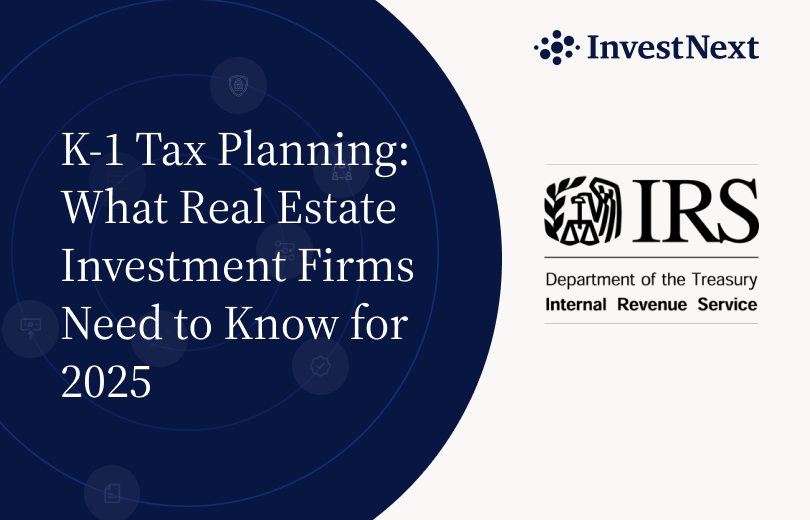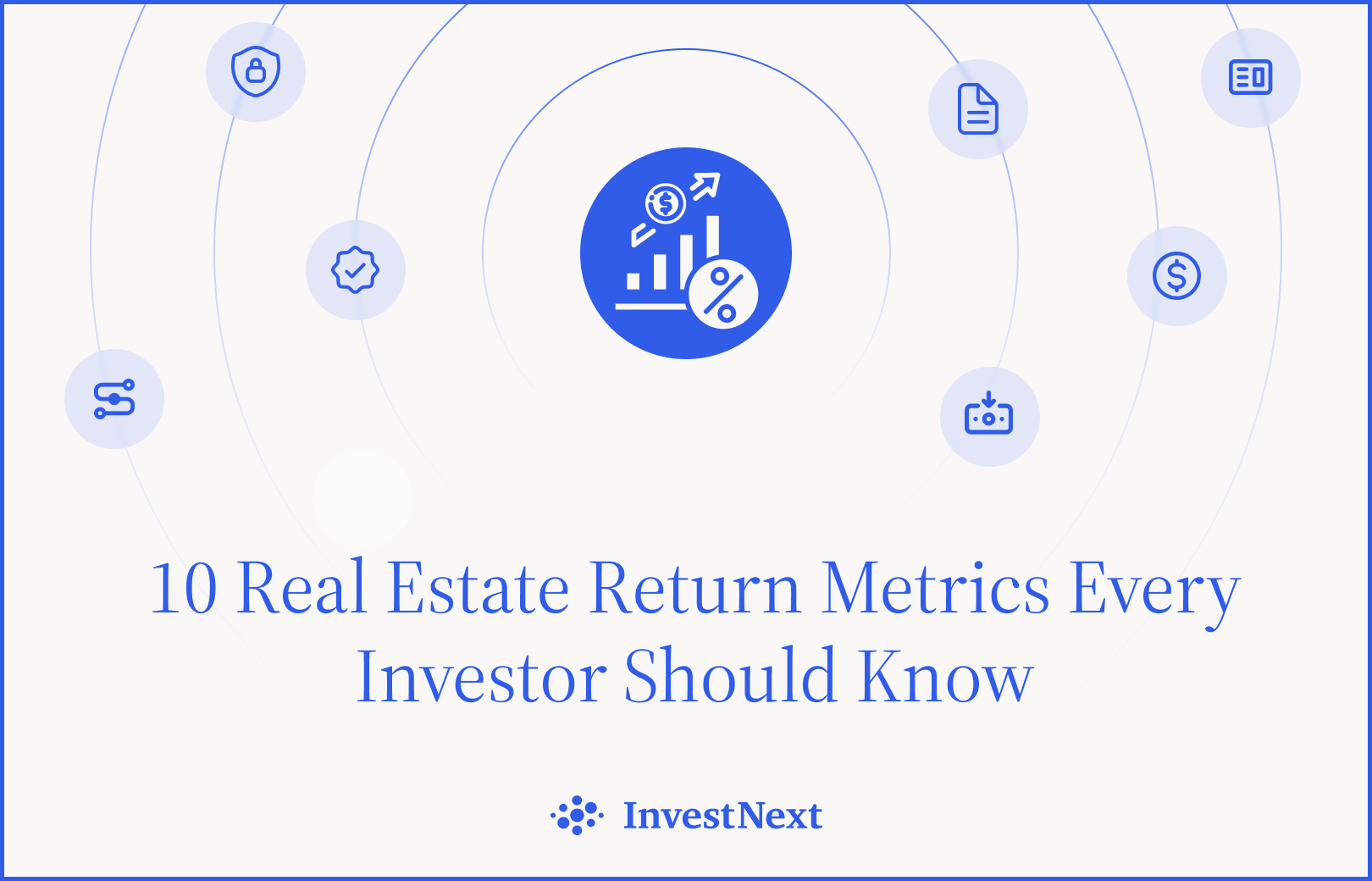Key Takeaways
- Tax document delays directly impact investor trust and future capital raises
- March 17, 2025 is the hard deadline for K-1s to be issued
- Manual K-1 processing drains resources during prime deal season
- Modern investors expect institutional-grade tax document management
- Systematic approaches protect both compliance and growth
Getting K-1s out to your investors isn’t just about meeting deadlines, it’s about maintaining the relationships that fuel your firm’s ability to grow.
Efficient K-1 distribution impacts everything from investor satisfaction to your ability to focus on new deals during peak season – especially for real estate investment firms.
When tax documents are delayed or contain errors, it doesn’t just create administrative headaches—it can cost you future investments and damage valuable relationships.
What are Real Estate K-1s?
Schedule K-1s reflect the complex nature of real estate partnerships, going far beyond simple income reporting. Each form captures critical financial elements that directly affect your investors’ tax positions and your firm’s compliance obligations.
Real estate K-1s must accurately track:
- Partnership income and losses, including operating income from properties and gains from sales
- Special allocations that modify standard profit-sharing arrangements
- Debt allocations that affect partner basis calculations
- Capital account changes that reflect true economic interests
- State-specific filing requirements for multi-jurisdiction investments
For real estate investment firms, K-1 distribution isn’t just about meeting the March 17th deadline. It’s about managing a process that impacts investor confidence while competing for attention during one of the year’s busiest periods for new deals. The complexity of real estate partnerships often necessitates extensions, particularly when dealing with multiple properties or sophisticated investment structures.
Get your copy of our exclusive guide for K-1 distributions here
Why Tax Season Makes or Breaks Investor Trust
Your investors have their own deadlines to meet—and according to the Tax Foundation, the complexity of tax compliance now costs the U.S. economy over $546 billion annually.
When K-1 delays or errors disrupt their tax filing process, you’re adding to this burden and eroding confidence in your firm’s capabilities.
The stakes are significant: The Tax Foundation reports that businesses spend an average of 105 hours completing just their main tax forms—and your investors are juggling multiple investments across their portfolios. They’re comparing your K-1 process against other sponsors, making your tax document management a direct reflection of your firm’s professionalism.
Download our 2025 Tax Season Checklist to streamline your process
This scrutiny intensifies as your investor base grows. With the Tax Foundation estimating that Americans will spend 7.9 billion hours on tax compliance in 2024—equivalent to 3.8 million full-time workers—efficient K-1 management isn’t optional. It’s a fundamental necessity for:
- Maintaining investor trust during critical filing periods
- Supporting future capital raises through demonstrated reliability
- Standing out in an increasingly competitive market
- Building sustainable, scalable processes
The True Cost of Manual K-1 Management
Most firms underestimate how manual K-1 processing affects their growth potential. The Tax Foundation’s research reveals that out-of-pocket costs for tax compliance now exceed $133 billion annually—but the true cost goes beyond direct expenses.
When teams rely on spreadsheets and manual processes, they face compounding challenges:
Resource Drain: Your most experienced team members join the equivalent of 3.8 million Americans spending their full work year on tax compliance instead of evaluating new opportunities during prime deal season. This opportunity cost directly impacts your firm’s growth trajectory.
Compliance Risk: With businesses spending an average of 105 hours per tax return, manual processing multiplies the likelihood of errors. A single mismatched document or incorrect allocation can trigger time-consuming investigations and damage investor trust.
Limited Scalability: As your investor base grows, manual processes become increasingly unsustainable. What works for 50 investors breaks down at 500, which creates an artificial ceiling on your firm’s ability to grow.
Transform your tax document management with our comprehensive checklist
Partner With InvestNext for Your Best Tax Season
Leading firms recognize that systematic K-1 management isn’t just about efficiency—it’s about creating scalable operations that support growth.
The right technology partner helps you:
Transform Tax Season: Move beyond mere compliance to create an institutional-grade experience that impresses investors and supports your growth objectives.
Protect Team Resources: Automated systems free your experienced professionals to focus on high-value activities like relationship building and deal evaluation.
Scale Confidently: Handle growing investor bases and complex structures without adding administrative overhead or compromising accuracy.
InvestNext’s connected platform enables:
- Automated document parsing and matching
- Secure investor portal access
- Single-click mass distribution
- Clear tracking and verification
- Multi-state compliance support
Get our exclusive tax guide for a detailed framework to bulletproof your K-1 distribution process
Ready to transform your tax document management?
Schedule a demo to see how InvestNext can help you deliver an institutional-grade K-1 experience while saving valuable time and resources.
Frequently Asked Questions
When must K-1s be issued for real estate partnerships?
K-1s must be issued to investors by March 17th, or the third month after the end of the entity’s fiscal year. Complex real estate partnerships often require extensions, particularly when dealing with multiple properties or jurisdictions.
How do K-1s impact real estate investment taxes?
K-1s report each partner’s share of partnership income, losses, deductions, and credits. For real estate investments, this includes rental income, depreciation, capital gains from property sales, and debt allocations—all of which affect individual tax liability.
Do firms need to file K-1s if there’s no income?
Yes. Even if your real estate investments generate no income or show losses, K-1s must still be issued to report partner allocations, including depreciation and other non-cash items that affect tax basis.
What happens if K-1s are delayed?
While delays can happen for a variety of reasons, firms should communicate proactively with investors about timing. Many investors will need to file extensions for their individual returns if K-1s aren’t received by early April.








